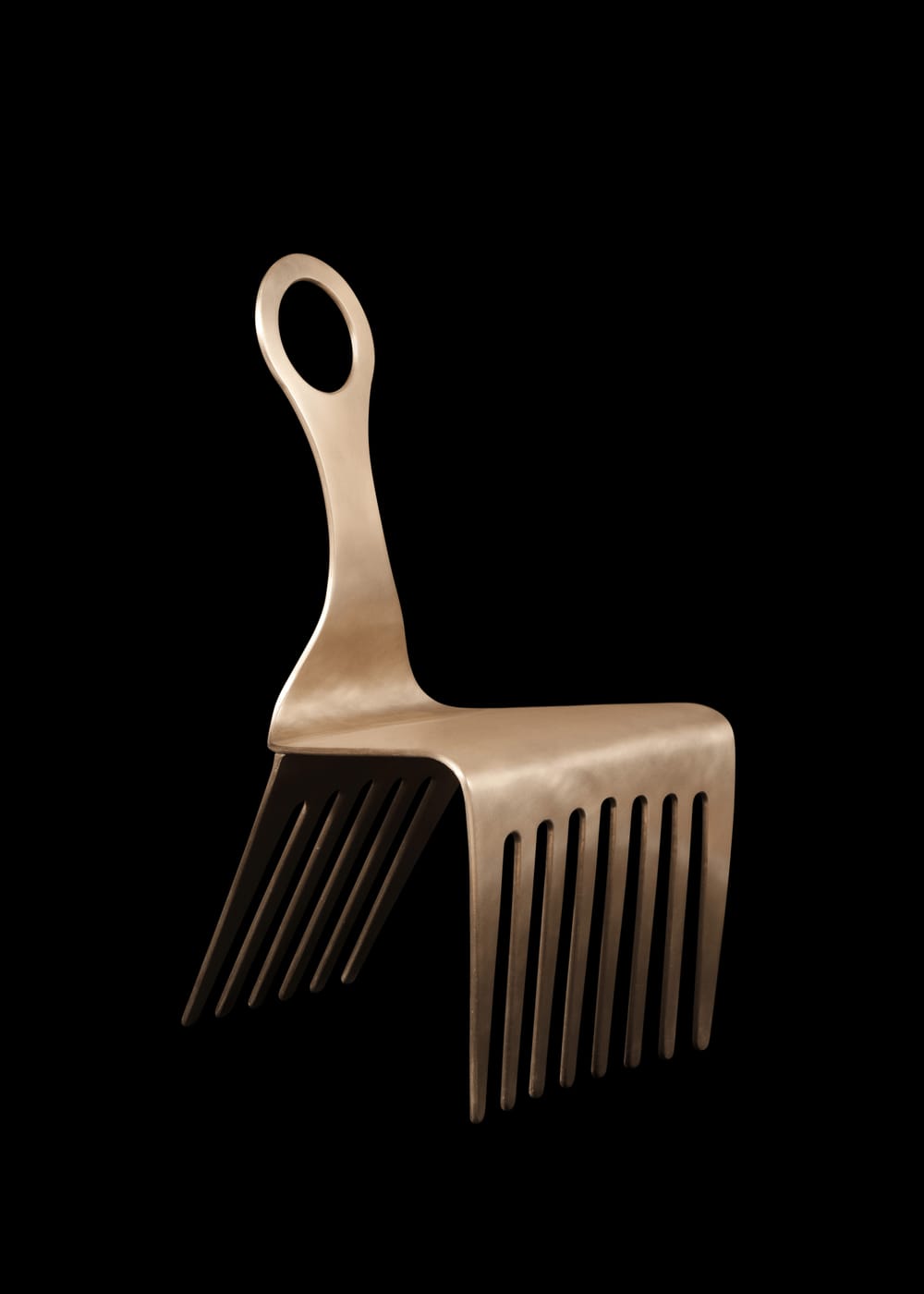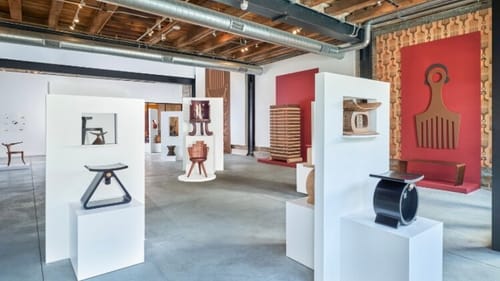Stay in the Loop
BSR publishes on a weekly schedule, with an email newsletter every Wednesday and Thursday morning. There’s no paywall, and subscribing is always free.
A fresh take on old and new art
The Wexler Gallery presents Jomo Tariku’s Juxtaposed

Ethiopian American artist and industrial designer Jomo Tariku gets his first-ever solo show in Philly, now on view at Fishtown’s Wexler Gallery. Part education and part modern showcase, Juxtaposed displays the original artifacts that influenced Tariku’s works alongside his contemporary reimaginings. His core design aesthetic of smooth wood, pure symmetry, and concentric circles contrasts with engraved wooden originals.
I had reservations about Tariku's showcase. As a former academic who specialized in the 18th to 19th century, I have a high antipathy for modern art. However, as a nerdy African American who loves the Marvel Universe and annually visits Black museums, it is difficult to overlook Tariku's background. His work is featured in the Philadelphia Museum of Art, the Baltimore Museum of Art, the Naval Observatory, and the Smithsonian’s National Museum of African American History and Culture. And, yes, Marvel used five of his designs in Wakanda Forever.
Old, new, and fresh
Although juxtaposing old art with modern isn't new, Tariku's take feels fresh. His concept utilizes the subtle dichotomy of heaven and earth. He places the original artifacts on platforms while seating his own art near the ground, establishing the museum-quality originals as “above” while affectionately describing his own as “below.”

I love the original art that he sourced from friends, acquaintances, and organizations. The intricate original Dogon (central Mali area) and Ashanti (Dahomey Coast area) stools called to me with their aged engravings. If you're a parent attending with your family, you'll enjoy the educational placards detailing the regional origins and practical uses of the originals.
Celebrating West African aesthetics
My favorite modern pieces include the Meedo Chair, the Zagwe Cabinet, and the Nyala Birthing Chair.
The Meedo Afro-Comb Chair unites the African American afro pick with the West African afro-comb. I love its nostalgic old-school feel and the bronze variations. In the 1970s, the afro pick represented the Black Power movement and natural hair beauty. Although its practical use was for detangling, it became a subtle style icon and middle finger to anyone who pooh-poohed Black aesthetics. Similarly, the Meedo chair is practical as a sitting object yet aesthetically recalls its representation in both West African and African American cultures. Although Tariku built the original in ash wood, upon request, he also developed a bronze throne-like alternative.
The Zagwe Cabinet, influenced by the Ethiopian Zagwe Dynasty’s architecture, is my second favorite. I love the intricate symmetry featuring more than a dozen levels of contrasting wood. There are certain places where it’s clear Tariku used the same piece of wood split across multiple tiers.
The Birthing Chair also truly spoke to me. This is another item I feel is universal to many non-white cultures and was popular in Black American culture. I recall seeing many of them in Black homes in the 1980s and encountered a lot of birthing-chair poses and imagery in my 20 years of Middle Eastern dance. Seeing a modern version of the birthing chair in a gallery setting was nostalgic and reifying. Jomo’s modern version uses plexiglass at the base and provides the option of rotating backgrounds, including a mini-human totem with spherical bronze eyes.

Drawing the Diaspora
I am glad I attended the October 10 opening event, where I was impressed with the amount of racial and cultural diversity. I have rarely attended mainstream Philadelphia cultural outings highlighting Black artists that actually featured Black audiences. However, the Wexler attendees included multiple descendants of the Diaspora (American, West African, and otherwise). Philadelphia has a strong West African population, so I was excited to see that presence. Philly media, please take note.
I also appreciated meeting Tariku by accident at the opening. He was circulating the space, giving tours, and talking to individuals. He is charismatic and self-effacing. While I find it hard to believe that anyone as successful and recognizable as he is would also remain grounded, I enjoyed the regional knowledge that he shared.
This is a show that’s educational for kids and appealing to insouciant teens. If you’re a student or can’t afford a PMA ticket, this installation is a great way to view Tariku’s works without a door charge. If you’re looking for something to do with your adult pals, you can visit the gallery and then walk to Fishtown’s many bars and restaurants. So, despite my modern-art reservations, I enjoyed the cultural nostalgia and the recognition of how old art lives on.
At top: Jomo Tariku’s bronze Meedo Afro-Comb Chair. (Image courtesy of Wexler Gallery.)
What, When, Where
Juxtaposed. By Jomo Tariku. Through December 20, 2024, at Wexler Gallery, 1811 Frankford Avenue, Philadelphia. (215) 923-7030 or wexlergallery.com.
Accessibility
Wexler Gallery’s showroom and restroom are ADA-compliant.
Sign up for our newsletter
All of the week's new articles, all in one place. Sign up for the free weekly BSR newsletters, and don't miss a conversation.

 An Nichols
An Nichols